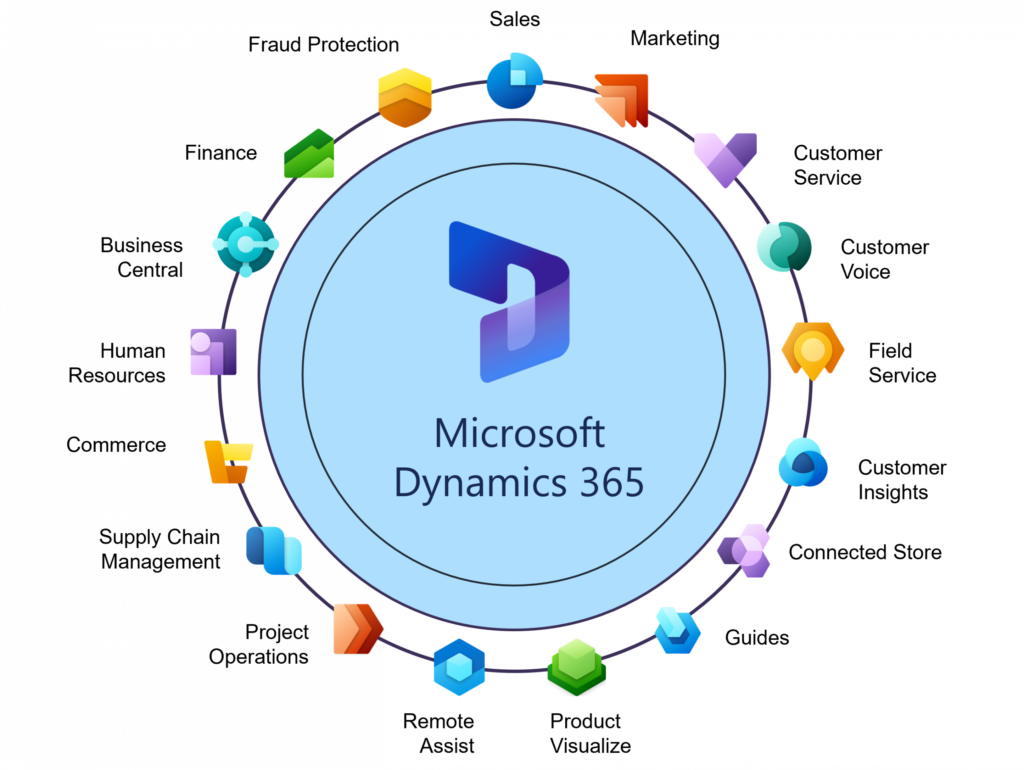Home » How to integrate Microsoft Dynamics 365 ERP with other business applications

You have the possibility to integrate business solutions and get a more complete view.
One of the benefits of using Microsoft Dynamics 365 is the ability to integrate the solution with other business applications already in use in your organization. In this way, it is possible to obtain a more complete and unified view of all the processes and data of the company, which can improve efficiency and decision making.
Here are some steps to take to integrate Microsoft ERP with other business applications.
What applications you want to integrate.
Evaluate each of the integration categories by API or third-party applications.
Once you have identified which applications you want to integrate with Microsoft ERP Dynamics it is important to evaluate the options available to perform the integration of the ERP Microsoft Dynamics 365, offers different integration options, such as integration through APIs, integration through connectors or integration through third-party applications.
Proceed to configure the integration of each Microsoft Dynamics 365 statement.
After selecting the desired integration option, you need to configure the integration by following the instructions provided by Microsoft. This may include configuring connectors, configuring APIs, or installing third-party applications.
You can customize and adapt each tool to your liking.
It is necessary to test the application and evidence its correct operation.
Then, after you set up and customize the integration, it’s important to test it to make sure it’s working correctly. This can include running integration tests and verifying that data is shared correctly between Microsoft Dynamics 365 and the integrated applications.
In addition, it is important to monitor Microsoft ERP integration regularly to detect and fix any issues that may arise. This may include configuring alerts or periodically reviewing integration logs.
Keep the integration in good condition and operation, in order to have the Microsoft ERP.
Once the integration is working properly, it is important to keep it up to date to ensure its smooth operation. This may include updating third-party connectors or applications, as well as updating Microsoft ERP Dynamics.
Finally, it is important to keep in mind that integrating Microsoft Dynamics 365 ERP with other business applications can improve efficiency and decision making by providing a more complete and unified view of all company processes and data.
To perform the integration of Microsoft Dynamics 365, it is important to identify the applications that you want to integrate, evaluate the available integration options, configure the integration, customize it and test and monitor its operation. In addition, it is important to keep the integration updated to ensure its smooth operation in the long term.
We are here to help you.
Contact us and we’ll get back to you with relevant information about our solutions and services.
Our specialist consulting team is looking forward to hearing from you!

We are here to help you.
Contact us and we’ll get back to you with relevant information about our solutions and services.
Our specialist consulting team is looking forward to hearing from you!

In accordance with the RGPD and the LOPDGDD, CUROGENS. will treat the data provided, in order to answer the questions and/or complaints raised through this form and provide the requested information. Provided that you previously authorize it, we will send information related to the services offered by CUROGENS. and the rest of the CUROGENS GROUP. You may exercise, if you wish, the rights of access, rectification, deletion, and others recognized in the aforementioned regulations. To obtain more information about how we are treating your data, access our privacy policy.